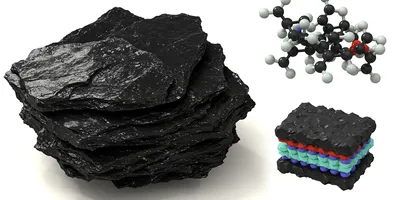Introduction: The Quest for Silicon Alternatives
For decades, silicon has been the cornerstone of semiconductor technology, driving the growth of computers, smartphones, and numerous electronic devices. However, as demands escalate for smaller, faster, more powerful, and energy-efficient electronics—key to innovations such as AI-driven computing, Internet of Things (IoT) devices, and wearable technology—researchers seek materials capable of overcoming silicon’s physical and functional limitations. Among these innovative candidates is black phosphorus, an advanced two-dimensional semiconductor material, often referred to as phosphorene in its ultra-thin form. Black phosphorus demonstrates exceptional promise due to its superior electrical properties, flexibility for miniaturization, and efficiency in energy use, positioning it as a leading contender in the next wave of semiconductor advancements.
What is Black Phosphorus?
Black phosphorus, a layered form of phosphorus, can be exfoliated into ultra-thin, atomic-scale sheets known as phosphorene. Phosphorene exhibits unique electronic properties that make it particularly suitable for transistor technology:
- Semiconducting Nature: Unlike graphene, phosphorene has a natural semiconducting property, meaning it can be switched on and off easily—crucial for transistor functionality.
- Two-Dimensional Structure: Electrons in phosphorene move only in two dimensions, enabling transistors to operate efficiently at significantly lower voltages, reducing heat and energy consumption.
Black Phosphorus vs. Silicon and Graphene
While silicon has powered electronics for generations, and graphene has intrigued scientists due to its strength and thinness, both materials have limitations:
| Material | Electrical Property | Thickness | Energy Efficiency | Suitability for Transistors |
|---|
| Silicon | Semiconductor | 3D Bulk | Moderate | High |
| Graphene | Metallic | 2D Atomic | High | Low (hard to switch off) |
| Black Phosphorus | Semiconductor | 2D Atomic | High | Very High |
As Professor Thomas Szkopek of McGill University states,
"Transistors work more efficiently when they are thin, with electrons moving in only two dimensions. Nothing gets thinner than a single layer of atoms."
The Advantages of Black Phosphorus
Black phosphorus provides several advantages for advanced electronics:
- Energy Efficiency: Enables transistors to operate at lower voltages, reducing power consumption and heat generation.
- Improved Scalability: Due to its two-dimensional structure, phosphorene can potentially facilitate the creation of more densely packed transistors, critical for future computing needs.
- Semiconductor Flexibility: Easier integration into electronic components compared to graphene, due to its inherent semiconductor nature.
Current Research Findings
Recent collaborative research by McGill University and Université de Montréal, published in Nature Communications, underscores the potential of black phosphorus:
- Electrons are confined to two dimensions despite occupying several atomic layers.
- Conducted under extreme conditions at the National High Magnetic Field Laboratory in Florida, providing insights into fundamental physics.
According to Szkopek,
“What’s surprising in these results is that the electrons are able to be pulled into a sheet of charge which is two-dimensional, even though they occupy a volume that is several atomic layers in thickness.”
Manufacturing Challenges and Opportunities
Despite its potential, large-scale manufacturing of black phosphorus remains challenging:
- Scalability Issues: Currently, methods for producing phosphorene at industrial scales are underdeveloped.
- Material Stability: Ensuring phosphorene's stability and longevity in commercial applications poses ongoing challenges.
“There is a great emerging interest around the world in black phosphorus. We are still a long way from seeing atomic layer transistors in a commercial product, but we have now moved one step closer.”
The Future of Electronics with Black Phosphorus
In the push toward more powerful, compact, and efficient electronic devices, black phosphorus represents a significant step forward. Potential future applications include:
- Advanced Computing Chips: Smaller, more powerful processors.
- Energy-Efficient Electronics: Reduced energy consumption in everyday devices.
- Flexible Electronics: Improved semiconductors for flexible devices, opening doors to innovative electronic products.
Conclusion: Towards a New Electronic Era
Black phosphorus has the potential to revolutionize semiconductor technology, complementing or even surpassing silicon-based systems. As research continues, the integration of phosphorene into mainstream electronics could lead to unprecedented advancements in efficiency, scalability, and performance. The future of electronics may very well be built on the atomic-thin layers of black phosphorus.
This content includes text that has been generated with the assistance of AI. Lab Manager’s AI policy can be found here.




